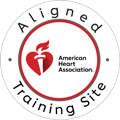Tuberculosis is a disease that is caused by a bacterium called as Mycobacterium tuberculosis. Tuberculosis is mostly called as TB. Tuberculosis mostly occurs in the lungs. Some of the other parts of the body where Tuberculosis can occur are Kidneys, spine, and brain. Not everyone infected with TB shows the symptoms of the disease, which means the person has Latent TB infection. Latent TB infection is not an active TB infection. Tuberculosis can be deadly if it is not cured immediately. Tuberculosis can be caused by one person to another from air. Tuberculosis is also a contagious disease. When a person has TB of the lungs and if he/she coughs or sneezes when other people are around then they can also become infected with Tuberculosis.
Tuberculosis can also be caused by close contacts of a person with contagious TB disease. Persons who have emigrated from different parts of the world with high TB rates can also get infected. Children who are less than five years of age who had a positive TB test can also have chances of getting infected with TB again. Persons with weak immune system or people who had any of the diseases or conditions like HIV infection, Substance abuse, Low body weight, kidney diseases, organ transplants or Diabetes mellitus also have chances of getting Tuberculosis in their life.
The symptoms of Tuberculosis include coughing with blood, which can lasts 3 weeks or longer, pain in the chest, weight loss weakness, heavy fever, chills and sweating at night. Latent TB infection does not have any symptoms and they cannot spread TB bacteria. If you have a relative or a friend who has been exposed to TB then you should contact a doctor and get tested to make sure you didn’t get exposed to TB as well. There are two types of tests that are used to detect TB bacteria. Tuberculin skin test (TST), which is done by injecting a fluid, called as tuberculin. The fluid is injected in the lower part of the arm. The person who is given this test has to wait for 48 to 72 hours and then returns to get the arm checked. The doctor or health care worker will look at the hand and if the hand area is swelled then using a ruler it is measured. TB blood test also known as interferon-gamma release assays (IGRAS) measures how the immune system reacts to the TB bacteria by testing the person’s blood. A positive IGRA test means that the person has been infected with Tuberculosis and treatment for TB is needed. A negative IGRA test means the person’s blood did not reacted to the test and the person does not have TB disease.
Latent TB infection is treated by medications such as isoniazid (INH), rifampin (RIF), rifapentine (RPT). Taking medications for 6 to 9 months treats TB disease. The medications for TB disease include isoniazid (INH), rifampin (RIF), ethambutol (EMB), and pyrazinamide (PZA). If the person infected with TB stops taking the medicine too soon then they can become sick again and the TB may become active. Sometimes people can become resistance to the TB drugs, which means the medications used for treating TB can no longer kill the bacteria in the person. Drug Resistant to TB can occur if people do not take the medications regularly or if they do not take all of their drugs. If the qualities of the drugs are poor or if the health care provider prescribes the wrong medication with wrong dose or the length of time for taking the drugs in shortened then they the medications will not affect the person and it can’t kill the bacteria in the body. To prevent the spread of drug –resistant TB then the person should take all the medications exactly as prescribed. The treatment should not be stopped early as the TB bacteria are still present in the body and they can get infected with Tuberculosis again.
References:
http://www.webmd.com/a-to-z-guides/understanding-tuberculosis-basics
Call Us Now
Get the Best CPR Class in Tampa Today!


